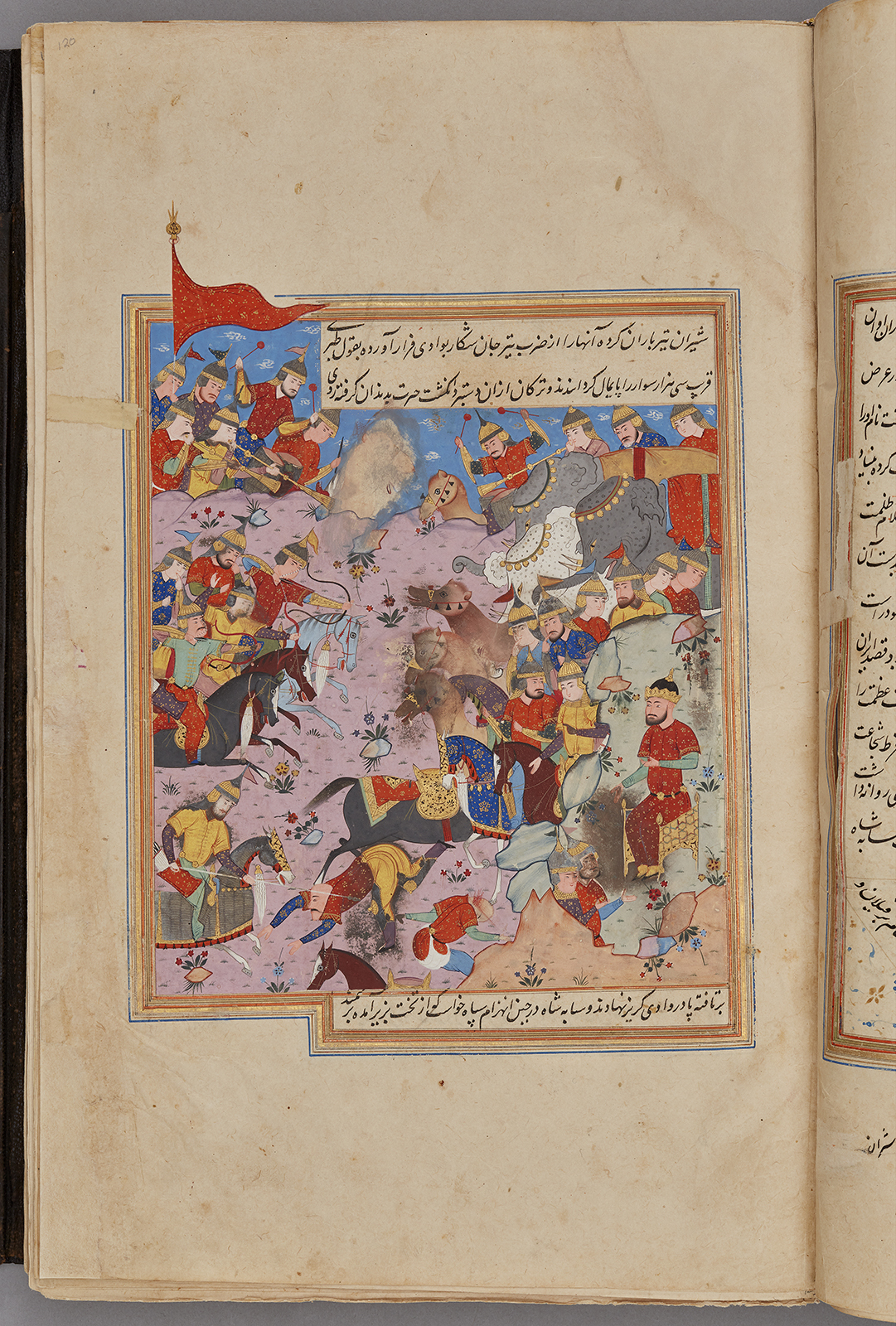Click on the image to zoom
The Iranian army attacks the superior forces of the Turks, Folio from a manuscript of Nigaristan
- Accession Number:AKM272.f120r
- Creator:Author: Ahmad b. Muhammad Ghaffari, Persian, died 1567 Scribe: Ahmad al-Shirazi
- Place:Iran, Shiraz (probably)
- Dimensions:38.7 cm × 25 cm × 6.4 cm
- Date: 1573-74 CE/980 AH/AH 980
- Materials and Technique: Ink, opaque watercolour, and gold on paper
The miniature painting "The Iranian army attacks the superior forces of the Turks" is from an intact manuscript of Kitab-i Nigaristan, a collection of anecdotes and historical incidents written in prose by the historian and scholar Ahmad Muhammad Ghaffari (1504–1567/68) of Kashan in 1551–2. This illustrated manuscript, dated 1573, was probably produced in a Shiraz workshop.See AKM272 for more information about the manuscript and links to the other illustrations.
Further Reading
This miniature painting employs battle scene iconography developed in the Timurid period (1370–1507). Two troops face each other and are placed on both sides of the folio. The troops are set diagonally to each other and the main battle takes place in the middle of the illustration. Here, one troop’s pennant is also accentuated because it pierces the top left of the pictorial frame. This technique has been used over many centuries to ensure that a particular element receives emphasis within the illustration.
According to the text (which originates from the historian Tabari), Turk troops attempted to capture Iranian territories under the rule of Samanid Kings. Although the Turk troops were superior because of the number of soldiers and battle elephants, they lost this battle to the military leader of the Samanids, Bahram Čubin. The illustration depicts this moment of victory.
- Elika Palenzona-Djalili
References
Frye, Richard N., ed. "The Samanids," The Cambridge History of Iran, Volume 4: The period from the Arab invasion to the Saljuqs. Cambridge: Cambridge University Press, 1975. ISBN: 9780521200936
Nagel, Tilman. Die islamische Welt bis 1500 (Oldenbourg Grundriss der Geschichte, Vol. 24). München: Oldenbourg Wissenschaftsverlag, 1998. ISBN: 9783406371714
Note: This online resource is reviewed and updated on an ongoing basis. We are committed to improving this information and will revise and update knowledge about this object as it becomes available.


